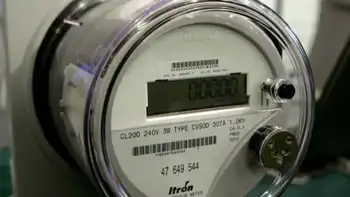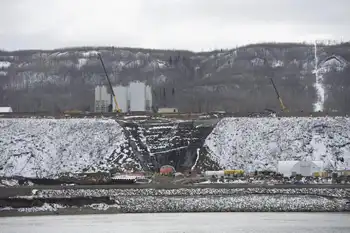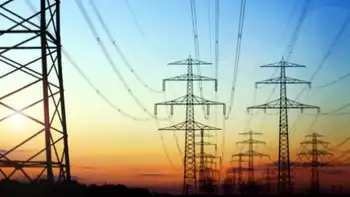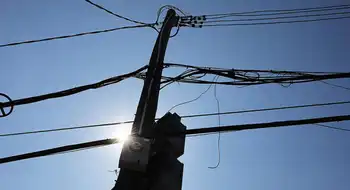Incentives inspire more customers to harness energy, savings from sun
By Milwaukee Journal Sentinel
Protective Relay Training - Basic
Our customized live online or in‑person group training can be delivered to your staff at your location.

- Live Online
- 12 hours Instructor-led
- Group Training Available
His New Berlin business, Sunnyslope Gardens, has long relied on the sun, but now it's powered by it as well.
"Being in the greenhouse business, I use solar energy every day with my green plants and producing my crop," Schutz said. "But I wanted to take it one step further."
Sunnyslope Gardens installed 24 solar panels last fall, and business owner Schutz says the panels that cover his roof, garage and even an awning beside his south-facing deck are turning heads.
"I'm happy with it," he said. "All my electricity is being paid for, and I'm getting refund checks from We Energies."
Panel by panel, project by project, solar power is spreading in Wisconsin.
The combination of state grants, federal tax credits and a program launched by We Energies to buy back power from solar panels installed by customers has led more than 37 electric customers across the state to add solar panels in just over a year. Across the state, the utility company program - Focus on Energy - has awarded more than 200 grants for solar projects.
The growing interest in renewable power has prompted Madison-based Madison Gas & Electric Co. to respond. The utility will announce today that it will offer a similar solar buyback rate to its customers in 2008. The rate will be modeled on the solar rates introduced by We Energies in the fall of 2005.
Solar power as an energy technology is microscopic in its ability to meet rising demand for power. But growing concern about energy independence and global warming are helping spur more interest in solar power.
Across the world, solar power represents just one-tenth of 1% of the energy supply, but technological advances and growth could help bring down the cost of renewable power from solar panels, said Niels Wolter, who leads the solar program for the statewide Focus on Energy initiative.
"We're starting to ramp up," Wolter said. "It's great to see these utilities stepping up to the plate."
At Milwaukee's Urban Ecology Center, the entire south-facing roof is now shingled entirely with panels generating solar power.
The 256 panels generate 44 kilowatts of power, which is enough to supply not only the non-profit environmental education center at Riverside Park but also nearby homes on a sunny day, says Ken Leinbach, the center's executive director.
For now, the east side non-profit is home to the largest solar power generator in the state. But a host of other larger projects are under consideration that would expand solar power even more.
"It's kind of embarrassing that we're the largest station in the state - and we're the largest by quite a bit - because we're not that big," he said.
Leinbach said he'd be glad to see other projects overtake his because he believes solar power is getting closer to the "tipping point" where it becomes affordable for homeowners to put on solar panels.
That is still several years away, but he says businesses looking for a payback on their utility bills are looking at taking advantage of solar rates and incentives to shorten the payback on a project that will be around for years.
We Energies buys back all the power generated by the solar panels at a rate of 22.5 cents a kilowatt-hour, which is much higher than the electric rates charged by the utility.
That generous buyback rate helps make the investment in solar panels pay off much more quickly than it otherwise would, Leinbach said.
The Urban Ecology Center's $230,000 investment could be paid off within 15 years or less if the solar panels generate as much power as projected, he said.
Having solar power at a non-profit educational center makes sense because the public needs to get educated about solar power and its potential, Wolter said. He credited We Energies for developing a special grant program for the Urban Ecology Center and other non-profits that can't take advantage of federal tax credits designed to spur solar power along.
Just weeks after completing his solar panels, Leinbach agrees.
"I get a ton of questions from people now," he said. "They want to know how does it work, how much does it cost."
People know so little about the topic, he added.
"They know it exists and they understand it's power from the sun, but beyond that I'm surprised by how little people are aware of it."
At Sunnyslope Gardens, a $27,000 investment in 24 solar panels will end up costing Schutz about one-third of that after factoring in federal tax credits and a Focus on Energy rebate, he said. The project should pay for itself in eight years, he said.
"I believe the technology is there and it's a no-brainer," said Schutz. "There are no moving parts. It's going to last 25 years, if not more. And once it's in place, it just makes energy."
We Energies had targeted 500 kilowatts for its special rate and already has signed up 47 customers who will generate nearly 300 kilowatts, said Roman Draba, vice president of regulatory affairs.
That's slightly ahead of schedule, he said.
The company is asking customers who sign up for its Energy for Tomorrow green-pricing program to fund its buyback rate. These customers pay more on their utility bills as a way to support development of renewable energy.
But We Energies was concerned that not all of its customers would want to pay more on their utility bills to fund projects such as solar energy.
"There are some customers that don't have the strong belief (in paying more for renewable power)," Draba said. "This way, we're able to not raise costs to other customers by getting the customers who do believe in it to invest in the facilities."
At Madison Gas & Electric, Greg Bollom, assistant vice president of energy planning, said the utility will ask state regulators next month to approve a customer buyback rate of 20 to 25 cents, potentially higher than the 22.5-cent rate offered by We Energies. The goal is to help "drive the market" toward more widespread use of solar power, he said.
"We have a lot of customers who have already done solar, but you reach a point where you start to hit a barrier," Bollom said. "The payback on those units is so high. One of the things we wanted to do is try to double the amount of solar that would be installed in our service territory and to try to push that along."











